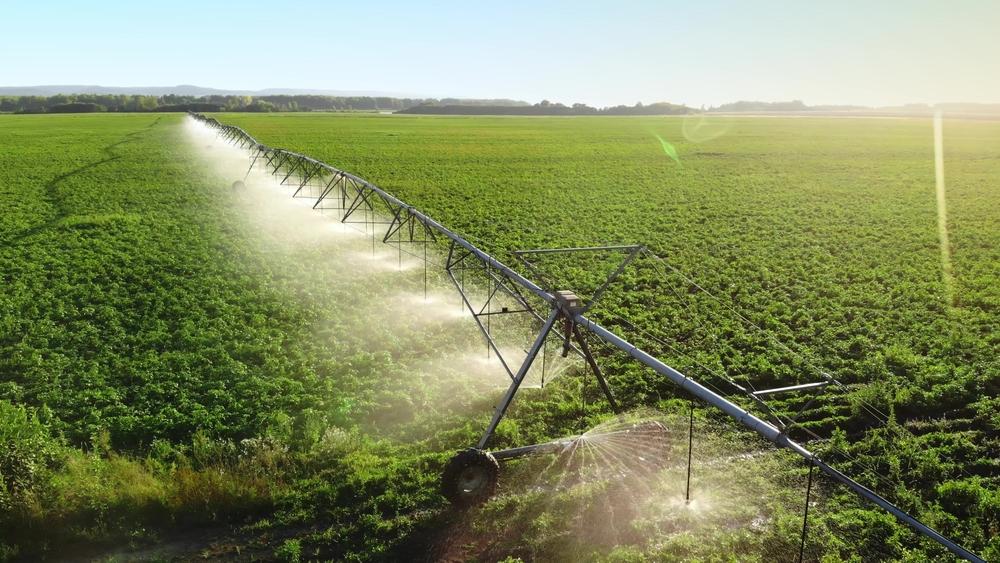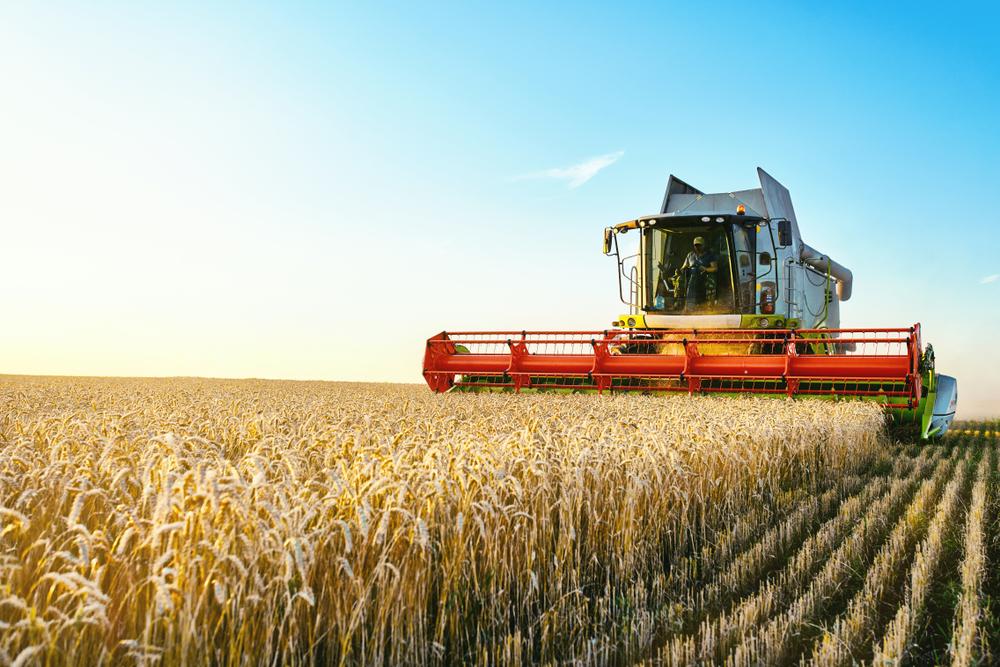Technology has made leaps and bounds over the last several decades, increasing our understanding of plants and how to increase yield. But even as our production grows, so does the population that needs to be fed. Efficient farming is essential and the backbone of any society.
Industrial equipment in the agriculture and grain industries is what makes so much food production possible. Heavy farm equipment takes the place of dozens of men on the farm, allowing farmers to produce enough crops sustainably.
Industrial Agriculture Equipment Categories
There are six broad categories of industrial Ag (agriculture) equipment:
- Tillage Equipment: Tillage machines till the soil by cutting it into smaller pieces to break apart clumps and refine the soil. Tilling digs deeper into the ground than cultivators to prepare a new field or when adding large amounts of fertilizer.
- Cultivation Equipment: This includes plows, harrows, and cultivators. This equipment helps prepare the ground for planting by turning and loosening the soil. Only the first couple of inches are loosened to prepare the soil for crops.
- Planting Equipment: Planting equipment prepares the soil for planting and distributing seeds, and they also firm the ground after seeding.
- Irrigation Equipment: Equipment that waters vast swathes of crops.
- Harvesting Equipment: Harvests crops and prepares the fields for winter.
- Material Handling & Storage Equipment: Moves and stores all the crops, hay, and other materials.
Types of Grain/Agriculture Industrial Equipment
Without the right industrial equipment, tools, and parts, your operation can come to a quick halt. The following types of grain and agriculture equipment are essential in creating efficient and profitable operating processes.
1. Tractors
Tractors are an extensive category of vehicles that can be set up to handle many tasks on the farm. Pulling attachments behind allows tractors to switch equipment attachments to match the required task.
Some attachments tractors pull are:
- Plows
- Fertilizer Spreaders
- Harrows
- Seeders
- Balers
- Cultivators
- Transplanters
- Wagons & Trailers
With so many attachment options, tractors are the workhorse of the farm, transitioning from one task to another.
2. Combines & Harvesters
Combine harvesters are primarily used for harvesting grain crops such as cereals. They are purpose-built for harvesting and threshing simultaneously. Combine harvesters can be pulled behind a tractor, but the self-propelled models are more commonly used.
The conventional combine harvester uses shakers to separate the grain from the chaff. The number of shakers they have can vary from four to eight.
The less conventional combine harvester uses rotors to separate the chaff. This design is more compact, less cumbersome, and requires less maintenance. The finished product is superior, with less broken grain. However, the equipment is sensitive to the mass and humidity of the straw, which can create inopportune harvesting windows. It also has a higher fuel consumption.
There are a few hybrid models, though they are less available on the market than the other two types.
Factors in choosing the right combine harvester are the type (shakers versus rotors), field size, storage capacity, wheels versus tracks, and price.

3. Field Irrigation Equipment
There are many systems of irrigation to get water to crops. Two of the most popular irrigation systems are sprinklers and microirrigation systems.
Sprinkler Systems
One of the most common irrigation systems for agriculture is sprinkler systems. This system of hoses, pipes, and pressurized sprinkler heads apply water to the soil from above with a circular, rectangular, and lateral pattern.
Sprinkler systems can be used for flat, undulating, or even sloping ground, making them a very versatile irrigation system. They use far less water than surface irrigation. Farmers can adjust and program the sprinkler heads to maximize water usage. Sprinklers are most viable for large swathes of land and can be adjusted and moved for different fields and crops.
Micro Irrigation Systems
Micro irrigation, or drip irrigation, is the most water-efficient agricultural irrigation system. Micro irrigation uses a complex system of soaker hoses, pipes, timers, sensors, and even programmable applications to directly water plants.
Water is applied directly to soil where the roots of the plants would benefit most and isn’t subject to the evaporation that sprinkler systems are. Sensors give information about the soil’s moisture levels to a central hub, which can activate or turn off the water pumps.
This highly water-efficient precision system prevents diseases from being passed from plant to plant because water doesn’t flow over land and contact multiple plants. Liquid fertilizer can be directly administered to the water supply to fertilize crops. Micro irrigation systems are best used for high-value row crops like orchards, cotton, maize, sugar cane, vegetables, and more.
The main disadvantage of microirrigation is the high capital and labor investment required to set it up. It also has a relatively high learning technological curve if you use sensors and software. To assess if a micro irrigation system is best for you, weigh the set-up cost against the long-term savings in time and water. If water is scarce, the system will soon pay for itself.
4. Modern Grain Conveyor Handling Equipment
As anyone who has worked with grain and cereals before knows, massive quantities of grain are heavy and require a lot of work to move. Engineers have long invented many systems, equipment, and tools to help improve grain handling.
Here are some of the various types of grain-handling equipment:
- Auger Systems: Augers use a turning helix (a giant screw) inside a long tube to move grain from one location—from a truck to a silo, for example. Augers can be portable or stationary, moving grain horizontally or on an incline. There is some inherent grain lost as it gets crushed between the screw and the side of the tube.
- Bucket Conveyors & Elevators: Bucket conveyors and elevators are conveyor systems made of spaced buckets secured to a moving conveyor belt, transporting grain up an incline or vertically.
- Chain Conveyors: Chain conveyors can move grain horizontally or on an incline. They typically use two chains with plastic pedals mounted between them, moving grain along its length.
- Belt Conveyors: Belt conveyor systems are, just as they sound, a moving belt conveyor that transports grain. They have lower grain motor energy requirements than augers and carry the material more gently and with less material loss. Belt conveyors have higher costs and require extra floor space and shallower incline angles. They also don’t protect grain from external contaminants. They work best in sheltered environments.
These are the most common grain handling systems. There are more, such as pneumatic conveyors, which use suction through a grain handling hose like a giant vacuum.
Factors like where you need to move the grain, volume, space, speed, energy, and grain safety requirements will all affect your decision in selecting the best grain handling equipment for your situation. When choosing a grain conveyor system, learn about the maintenance requirements of different bulk material handling equipment types, as some require more maintenance than others.
IBT’s Grain Division will help you choose the best grain-handling solutions that meet your needs.
5. Heavy Construction Equipment
While heavy construction equipment may not seem like “farming equipment,” farmers still regularly use skid steers, backhoes, dozers, excavators, and other construction equipment.
Heavy construction equipment is used for earthmoving, maintenance, material transport, and more. Farmers use construction equipment to dig out boulders, remove trees, drain fields, dig irrigation ditches, and more. Many farmers find that having construction equipment on hand can save them the time, effort, and expense of renting equipment, which requires transportation.
IBT’s Agricultural Industry Services
Above all else, it’s important to remember that the maintenance of industrial equipment in the agriculture and grain industries is what will keep operations running smoothly. IBT’s industry professionals can service your equipment, offering high-quality products and fast turnaround times. We offer:
- Motors
- Bearings and Bearing Lubrication
- Hydraulic Hoses
- Power Transmission
- Material Handling
- General Industrial Supplies and Safety/PPE
Need help choosing the best industrial agricultural equipment to fit your needs? IBT’s experts will help you find the right equipment for the task. Whether it’s one piece of equipment that does its job well or it’s equipment that can be outfitted to perform various tasks, we’ll help you get the most out of your investment.





